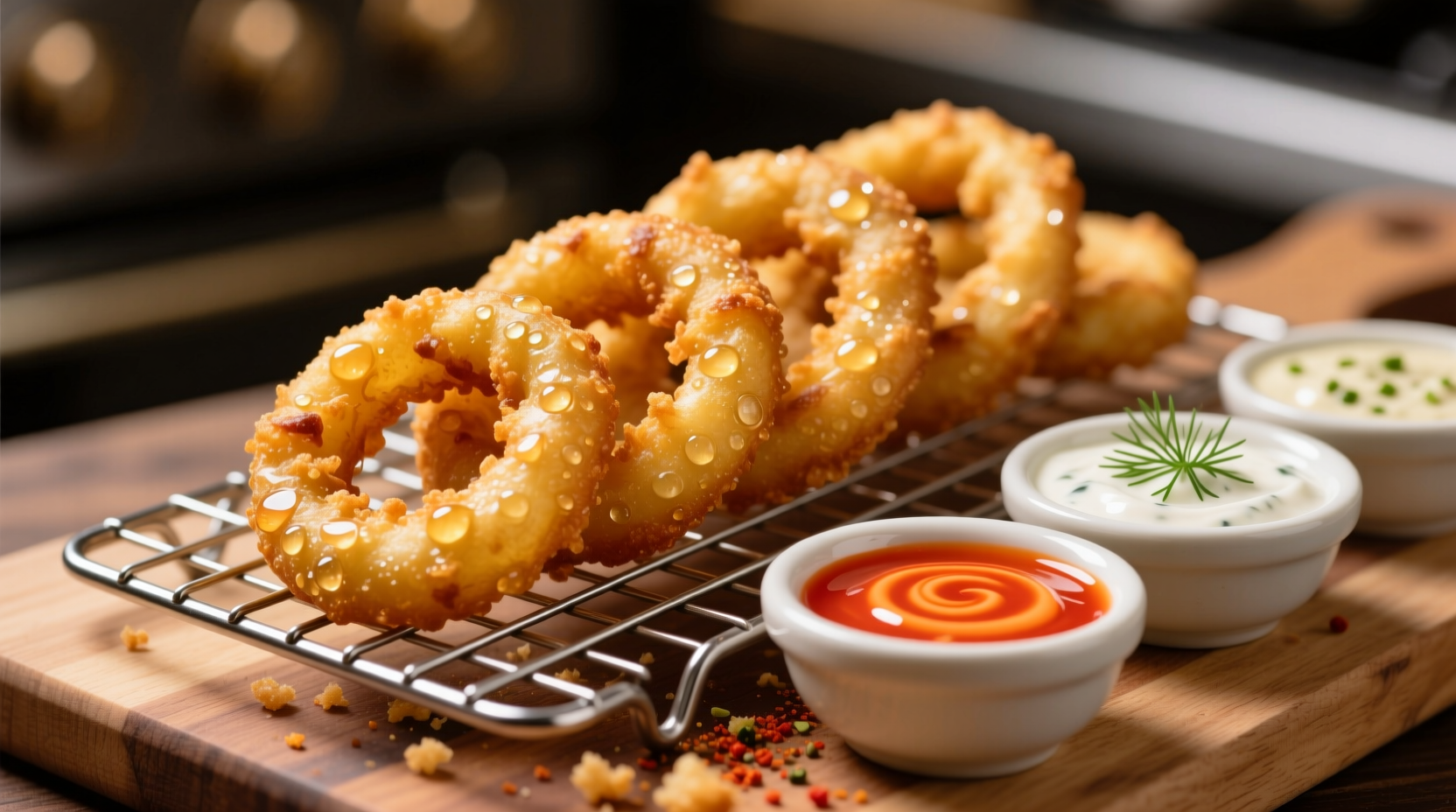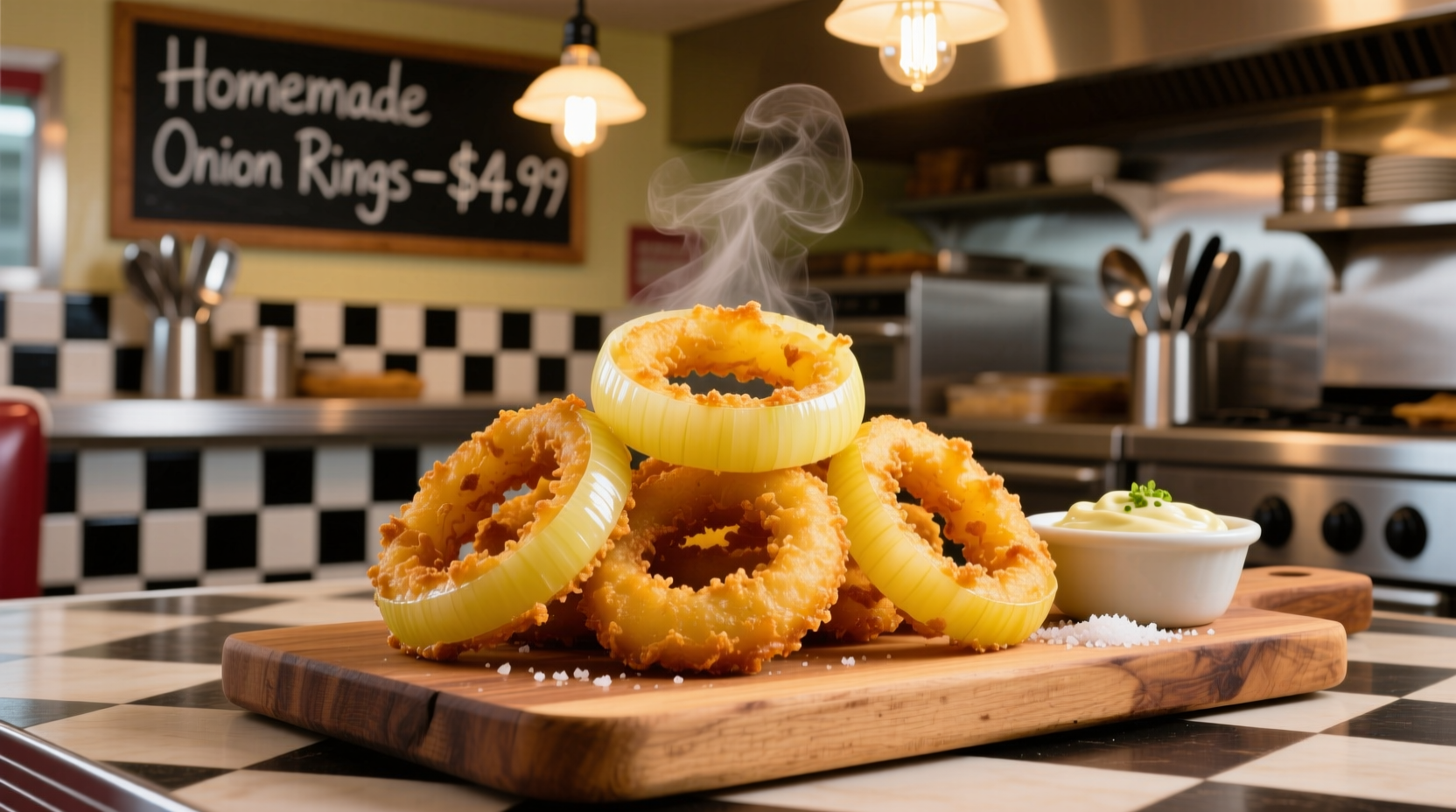Discover the ultimate crispy homemade onion rings recipe that delivers perfect crunch every time. This tested method combines professional chef techniques with accessible ingredients for restaurant-quality results in your kitchen. Includes foolproof batter formula, ideal frying temperature (375°F), and solutions for common problems like soggy rings.
The Science Behind Crispy Onion Rings
Creating perfectly crisp onion rings isn't just about following steps—it's understanding the chemistry. When onions hit hot oil, moisture rapidly evaporates while the batter undergoes the Maillard reaction, creating that golden-brown crunch. The key challenge? Onions contain 89% water, which can make batter soggy if not properly managed. Professional kitchens solve this through a three-step process: chilling onions to reduce moisture, using a light batter that sets quickly, and maintaining precise oil temperature.
| Coating Method | Crispness Rating | Moisture Resistance | Best For |
|---|---|---|---|
| Classic Beer Batter | ★★★★☆ | High | Fried applications |
| Panko Breadcrumbs | ★★★★★ | Medium | Air fryer/oven |
| Flour-Egg Dip | ★★★☆☆ | Low | Quick preparation |
Essential Ingredients & Equipment
Quality ingredients make the difference between mediocre and magnificent onion rings. While yellow onions work best for their balanced sweetness, Vidalia onions create exceptionally sweet rings ideal for dipping sauces. Avoid red onions—they become bitter when fried.
What You'll Need:
- 2 large yellow onions (about 1.5 lbs)
- 1 cup all-purpose flour
- 1 cup pilsner beer (or buttermilk for non-alcoholic version)
- 1 tsp baking powder
- 1/2 tsp paprika
- Peanut oil for frying (smoke point 450°F)
- Candy thermometer
Classic Crispy Onion Rings Recipe
This professional technique yields consistently perfect results. The secret? Chilling sliced onions before battering reduces surface moisture that causes oil splatter and soggy coating.
- Prep onions: Slice into 1/2-inch rings, separate layers, and chill in ice water for 20 minutes
- Heat oil: Fill heavy pot with 2 inches oil, heat to 375°F (critical temperature range: 370-380°F)
- Make batter: Whisk flour, baking powder, paprika, then gradually add cold beer until smooth
- Dry onions: Pat rings thoroughly with paper towels—moisture is the enemy of crispness
- Batter & fry: Dip rings in batter, let excess drip, fry 3-4 rings at a time for 2-3 minutes until golden
- Drain properly: Place on wire rack (not paper towels) to maintain crispness

Variations for Different Cooking Methods
While deep-frying produces the crispiest results, these alternatives work well with proper technique adjustments:
Air Fryer Onion Rings
Spray panko-coated rings with oil, cook at 400°F for 8-10 minutes, flipping halfway. Best for pre-made frozen rings—homemade versions rarely achieve same crispness due to moisture content limitations.
Baked Onion Rings
For health-conscious cooks: Dip in egg wash, coat with panko-parmesan mix, bake at 425°F on greased rack for 15-18 minutes. Texture will be drier but still satisfying.
Troubleshooting Common Problems
Soggy rings? Oil temperature dropped below 360°F or onions weren't properly dried. Maintain consistent oil temperature using a thermometer.
Batter sliding off? Onions were too wet or batter was too thin. Thicken batter with additional tablespoon of flour.
Uneven browning? Oil temperature fluctuated. Fry in small batches and allow oil to return to 375°F between batches.
Serving Suggestions & Dipping Sauces
Onion rings shine alongside burgers, sandwiches, or as standalone appetizers. For dipping sauces, try these chef-approved combinations:
- Classic remoulade: Mayonnaise, capers, hot sauce, lemon juice
- Spicy ranch: Buttermilk ranch with chipotle powder and garlic
- Truffle aioli: Mayonnaise, truffle oil, minced garlic, lemon zest
Onion Rings Through History
While fried onion recipes appeared in European cookbooks as early as the 1669 (La Cuisine Française), the modern onion ring emerged in 1930s America. According to food historian John Mariani's research documented by the Oxford Symposium on Food and Cookery, the first commercial production began at the A&W root beer stand chain in 1941. The technique spread rapidly during WWII when meat rationing made creative vegetable preparations essential.











 浙公网安备
33010002000092号
浙公网安备
33010002000092号 浙B2-20120091-4
浙B2-20120091-4